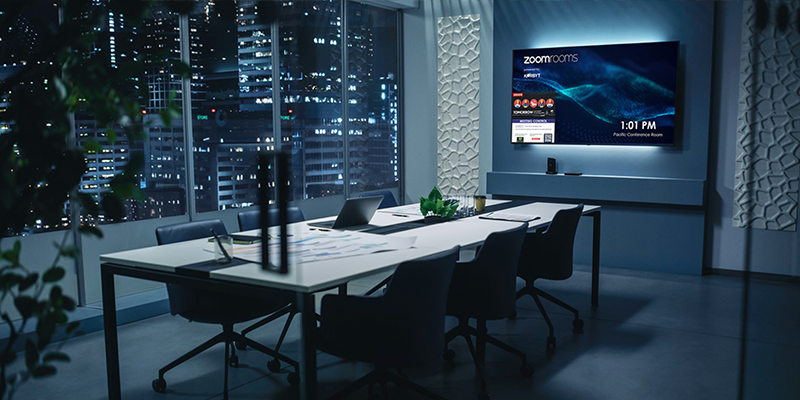
Despite advancements in meeting room technology, such as improved audio-visual capabilities and more screens, the fundamental experience of entering a meeting room remains essentially stagnant. AV/IT professionals can position themselves as leaders supporting critical workplace initiatives.
When you step into that meeting room, it’s a far cry from an engaging experience. More often than not, you’re met with a darkened screen or a monitor flashing outdated information. Instructions, if any, are often missing, leaving you to wonder how to navigate the space. And then there’s the sight of people idly scrolling through their cell phones, waiting for someone to step up and lead the way.
Despite advancements in meeting room technology, such as improved audio-visual capabilities and more screens, the fundamental experience of entering a meeting room remains essentially stagnant. It’s a paradox – our work habits have undergone a profound transformation, yet the meeting room experience lags behind.
Here lies a remarkable opportunity for AV and IT professionals. Now they can position themselves at the forefront of critical executive initiatives. By extending software solutions like digital signage to revolutionize the meeting room experience, they have the power to amplify their team’s value proposition exponentially. These rooms, often overlooked, can become a pivotal component of the office environment, delivering outcomes that resonate far beyond the confines of the meeting itself.
The simplest path to accomplish this involves harnessing the potential of the hardware already at our disposal to enhance the overall experience. It’s a straightforward equation: every impression, every interaction, contributes to the tapestry of effective communication. Meeting room signage, in this context, emerges as a potent tool, filling those moments of anticipation with engaging content.

But the benefits don’t stop there. Equipping these spaces with clear AV instructions also works wonders. It not only streamlines the operations of IT teams but also paves the way for cost savings. It’s a win-win, where efficiency and economics converge to elevate the experience and the bottom line.
The next logical step would be transitioning to dynamic digital signage, leveraging real-time data to tailor the messaging based on who is sitting in the room or by delivering operational performance metrics that keep critical KPI’s top of mind.
With the magic of digital signage powered by AI, machine learning algorithms are on a constant lookout, monitoring how your audience responds and tweaking the content accordingly. It’s as if you have a dynamic storyteller who’s got an uncanny knack for knowing precisely what grabs your viewers’ attention. By serving up the perfect content precisely when it’s needed, you can craft an immersive experience that etches itself into memory.
But here’s where it gets even more exciting—AI enables you to personalize your content like never before. It factors in individual preferences, demographics, and even real-time variables like weather or location. This means every viewer gets the sensation that you’re speaking directly to them, forging a profound connection and engagement that transcends the ordinary.
(2023, September 21). Korbyt, Andrew Gildin & Guy Serwin. Retrieved from https://xchange.avixa.org/posts/dynamic-meeting-room-digital-signage-using-real-time-data-and-machine-learning?channel_id=digital-signage
